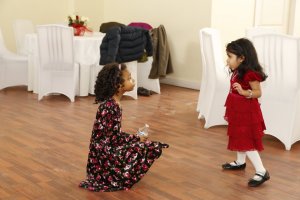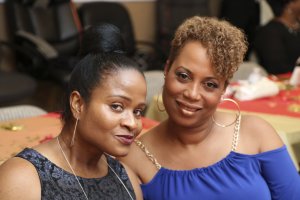Hi Suman,
By ‘normal’ behaviour I meant always using a shutter speed of 1/200 as VegasCameraGuy said he was getting.
There are two main aspects to ETTL II that the camera controls In Av and P modes, it uses the flash power to control the subject illumination in combination with the set aperture, and it controls the ambient exposure separately by changing the shutter speed in combination with the aperture. These are two distinct exposures controlled completely independently at the same time that share a common aperture, which is why ETTL is at it’s most powerful when used in Av mode.
But this can lead to issues because in very dark conditions where the ambient light is minimal the shutter speeds can be very long, up to 30 seconds, the old fashioned way we dealt with this was to use ETTL for the flash but use the camera in M mode, thereby we set the background/ambient exposure and ETTL only dealt with the subject exposure.
The modern solution is to give the camera menu options for shutter speed regardless of the background brightness, the R5 has three options in the Menu under Slow Sync, 1/250-30sec Auto, 1/250-1/60 Auto, and 1/250. Traditionally ETTL II uses 1/250 - 30 sec Auto (or max sync speed to 30 sec), in that it will use any shutter speed it can to get a complimentary background exposure. But as I said this can cause issues in dark settings so rather than us learn how it is actually working Canon gave us a Menu option work around. The 1/250-1/60 Auto is the most useful setting as it caps the slow shutter speed to 1/60 sec thereby preventing the worst of the long exposures in dark situations. The 1/250 option is the newest and sets the background exposure in Av mode to the set aperture and the fastest shutter sync speed, on the R5 that is 1/250 electronic and 1/200 mechanical. Effectively when 1/250 is set in the menu in Av mode the camera is behaving exactly the same as it would be in M mode set to 1/250 electronic or 1/200 mechanical, the ETTL is being limited simply to the subject exposure.
This means half the computing power of ETTL II is being overridden, so is not ‘traditional’ behavior in Av mode. So if you are always getting 1/200 (max mechanical sync speed) as an exposure in Av mode with an R5 and a flash mounted in ETTL then the camera is not working out a background exposure and is behaving exactly the same as it would if you had it in M mode and set the shutter speed to 1/200. Ergo you must have the camera set to override ‘normal’ ETTL II behavior in the Slow Sync options.
Hope this explains it in an understandable way.



